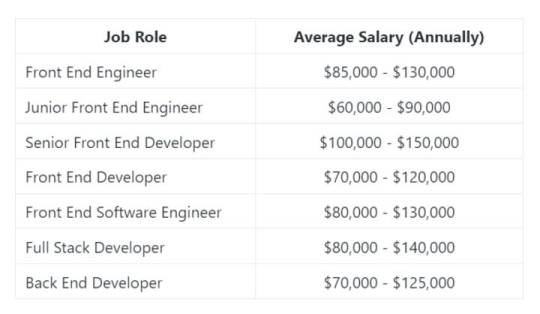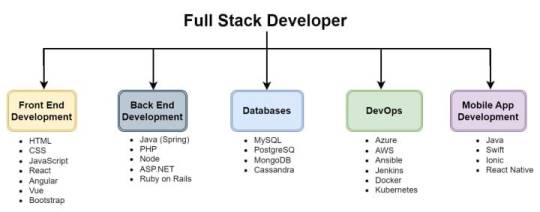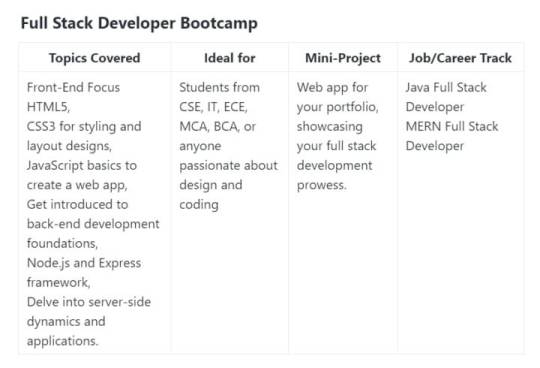#web analytic
Explore tagged Tumblr posts
Text
Coding resource!


exercism.org
A free website where you get specific problems to methodically learn small concepts of a programming language. Do 10 minutes to 1 hour every day, and then you will keep practicing every day, and you will be able to use the skills you learn in your real projects. They walk you through the problem all the way, and it's a super good way to learn!
#coding#programming#web development#resources#codeblr#progblr#learn to code#software development#python#javascript#js#c++#c#css#html#resource#data analytics#computer science#cs#compsci
2K notes
·
View notes
Text

Maybe my fifth try at studyblr. First time was early COVID era lol. Do interact! Maybe some accountability will help me stay more consistent!! It should also help that it's still like 5th week of lectures, not a crazy time like finals lol
Today's tasks:
Revisit Online Marketing notes
Web Analytics Notes
Write Information Law notes based off slides
Play BOTW
#studyblr#university#information management#information student#library sciences#information sciences#student life#dark academia#uni#university student#university life#online marketing#web analytics#damm i also need to figure out my tags....#study blog#study motivation#studyspo#study aesthetic
29 notes
·
View notes
Text
fuck sorry making a hs post on the hs blog. have always been not very much of a classpect person in terms of like. giving a fuck about the construction and logistics of the classification as a system. but i Have always been really haunted by the more metanarratively intertwined side of its existence, the story archetypes functioning as the nonnegotiable shackle of the whole destiny mythology creation shit. and because i am me i get really really caught up on how these two pillars of existence of their concept get retranslated via fandom. troubles me a little bit how the fandom tends to shoot more towards that ontological classification system that exists to describe/prescribe their placement and traits rather than vice versa, as functionally putting them within those boxes. like blah blah videogamemechanics it Is both but i think its more one than the other! why is a story about narratives being living breathing antagonistic so flocked to by people afraid of considering that narrative as such. have a funny scene where my thoughts on it are accentuated by a gag that actively changes gamzees class in order to further drive home the whole entrapped in a tower shit. in my brainchild
#its clown town#i dont talk abt the brainchild project on here much due to the fact lifes to unstable to be making it or even really blocking it all out#i just do a lot of concept working and analytical web weaving#also tho i just didnt rly feel safe looking at it for a few months there. now im mad again#<- dreams abt just losing interest before i have to make it but kows my allegience to hs think has little to do with interest.#its spite. if u wondered.
9 notes
·
View notes
Text
A Beginner’s Guide to Understanding Website Analytics for Business Growth
In today's digital world, having a website is just the first step toward establishing an online presence. Understanding how to leverage website analytics is equally crucial for driving business growth. Website analytics provide valuable insights into how users interact with your site, what they are looking for, and where you can improve. This guide aims to demystify website analytics for beginners, outlining the essential metrics to track, the tools to use, and how to apply these insights to enhance your business.
What Are Website Analytics? Website analytics are the processes of collecting, analyzing, and interpreting data related to your website's performance. This data helps you understand visitor behavior, including: Traffic sources: Where your visitors come from, whether through search engines, social media, or direct visits. User behavior: How users navigate through your site, including which pages they visit, how long they stay, and where they drop off. Conversion metrics: The actions users take on your site, such as completing a purchase, filling out a contact form, or signing up for a newsletter. By leveraging analytics for business growth, you can make informed decisions that enhance user experience, boost conversions, and ultimately increase revenue.
Key Metrics to Track Understanding which metrics are vital for your business is the first step in utilizing website analytics effectively. Here are some of the key metrics to focus on: Traffic Volume: This refers to the number of visitors to your website over a specific period. Monitoring traffic volume helps you assess the effectiveness of your marketing strategies. Bounce Rate: This percentage indicates the number of visitors who leave your site after viewing only one page. A high bounce rate may suggest that your content isn't engaging or that users cannot find what they are looking for. Average Session Duration: This metric measures how long, on average, visitors spend on your site. Longer session durations often correlate with more engaging content and a better user experience. Conversion Rate: This critical metric tracks the percentage of visitors who complete a desired action, such as making a purchase or signing up for a newsletter. Analyzing your conversion rate can highlight the effectiveness of your calls to action and overall site usability. Page Views per Session: This measures the average number of pages viewed during a single session. More page views indicate that users find your content valuable enough to explore further. By regularly monitoring these metrics, you can gather valuable insights into your website's performance and user behavior, ultimately leading to better business decisions.
Tools for Website Analytics Several tools are available for tracking website analytics, each offering unique features and insights. Here are some of the most popular options: Google Analytics: This free tool is one of the most widely used analytics platforms, providing in-depth insights into website traffic, user behavior, and conversion tracking. With Google Analytics, you can set up goals to monitor specific actions taken by users on your site. Google Search Console: This tool focuses on your website's search performance, offering insights into how your site appears in search results and which queries bring traffic to your site. It also helps identify technical issues that could affect your SEO. Hotjar: This tool provides heatmaps and session recordings that visually demonstrate user interactions on your site. This information can help identify user behavior patterns, allowing you to optimize your website's design and functionality. SEMrush: While primarily an SEO tool, SEMrush offers features for tracking website performance and traffic analysis. It also provides competitor analysis, allowing you to benchmark your site against others in your industry. Matomo: An open-source analytics platform, Matomo offers complete control over your data. It provides similar features to Google Analytics while allowing for more customization and privacy options. By utilizing these tools, you can gather comprehensive data to understand user behavior better and make informed decisions.
How to Use Analytics for Business Growth Collecting data is only the first step; analyzing and applying the insights to drive business growth is where the real value lies. Here are some strategies to maximize your website analytics: Identify and Fix Problem Areas: Use bounce rate and average session duration metrics to pinpoint pages that may be causing users to leave your site. Consider redesigning these pages or improving the content to keep users engaged. Optimize Conversion Paths: Analyze user flows to see how visitors navigate through your site before converting. Identify any bottlenecks or unnecessary steps that might be hindering conversions and streamline the process. Content Strategy Refinement: By monitoring which pages generate the most traffic and engagement, you can identify the types of content that resonate with your audience. Use this information to create more of what your audience loves, whether blog posts, videos, or infographics. A/B Testing: Implement A/B testing to compare different versions of web pages or calls to action. Use analytics to track which version performs better in terms of conversion rates and user engagement, allowing for data-driven decisions. Segmentation for Targeted Marketing: Use analytics to segment your audience based on behavior, demographics, or traffic sources. Tailor your marketing campaigns to these segments, ensuring that your messaging resonates with specific audience groups.
Understanding Google Analytics For beginners, Google Analytics can be overwhelming, but breaking it down into essential components can simplify the process. Here are some key areas to focus on: Dashboard: The Google Analytics dashboard provides a snapshot of your website's performance, including traffic, user behavior, and conversions. Real-Time Reports: This feature allows you to see who is currently on your site, what pages they are visiting, and where they came from. It’s useful for monitoring the immediate impact of marketing campaigns. Audience Reports: These reports give insights into your audience demographics, interests, and behavior, helping you understand who your visitors are and how to cater to their needs. Acquisition Reports: This section reveals how users find your website, whether through organic search, paid ads, social media, or referrals. This information is crucial for refining your marketing strategies. Behavior Reports: Here, you can analyze how users interact with your site, which pages they visit most often, and where they tend to exit. Conversion Tracking: Set up goals in Google Analytics to monitor specific actions taken by users, such as purchases or sign-ups. This will help you measure the effectiveness of your website in driving conversions. Conclusion Understanding website analytics is essential for any business looking to thrive in the digital age. By tracking key metrics, utilizing powerful analytics tools, and applying insights to improve user experience, you can foster business growth and enhance customer engagement. As you begin your journey into the world of website analytics, remember that the data you collect is only as valuable as the actions you take based on it. Embrace the insights offered by analytics, and leverage them to create a website that not only attracts visitors but also converts them into loyal customers. Whether you’re new to website analytics or looking to refine your existing approach, this guide serves as a foundation for understanding how to utilize data effectively to drive business success. Happy analyzing!
#logo design#creative logo#graphicdesigner#logodesigner#web design#web development#seo services#business#semrush#website analytics
2 notes
·
View notes
Text

Cognizance IIT Roorkee Internship and Training Program
Registration Link : https://forms.gle/E2cHdnjyzYytKxC39
#engineering#internship#jobs#iit#work from home#student#ai#datascience#data analytics#machinelearning#webde#web development#ui ux development services#graphic design#finance#marketing
3 notes
·
View notes
Text
What is Digital Marketing ?
Digital marketing refers to the use of digital channels, platforms, and technologies to promote products, services, or brands to reach consumers. It encompasses a wide range of online marketing tactics and strategies.

Key components of digital marketing include:
Search Engine Optimization (SEO): Optimizing websites and content to rank higher in search engine results pages (SERPs).
Search Engine Marketing (SEM): Paid advertising to appear in search engine results, often through platforms like Google Ads.
Social Media Marketing: Promoting products or services on social media platforms like Facebook, Instagram, Twitter, etc., to increase brand awareness, engagement, and sales.
Content Marketing: Creating and distributing valuable, relevant content to attract and retain a target audience. This can include blog posts, videos, infographics, and more.
Email Marketing: Sending commercial messages to a group of people via email to promote products or services.
Influencer Marketing: Collaborating with influencers who have a dedicated and engaged following to promote products or services.
Affiliate Marketing: Partnering with other businesses or individuals who promote your products or services in exchange for a commission.
Online PR: Using digital channels to manage a company's reputation and build relationships with the media.
Analytics and Data-driven Marketing: Utilizing data analysis tools to measure marketing efforts and optimize strategies based on insights.

Digital marketing allows businesses to reach a global audience, target specific demographics, track and measure results in real-time, and adjust strategies based on performance data. It has become essential for modern businesses looking to grow their online presence and increase sales in a competitive digital landscape.
#digital marketing#online marketing#social media marketing#web analytics#marketing#business#future of marketing
4 notes
·
View notes
Text
What is Digital Marketing?
The term "Digital Marketing" is the practice of promoting goods, services, or brands to customers through digital platforms, channels, and technology. It includes a broad range of online marketing initiatives, such as pay-per-click (PPC) advertising, content marketing, email marketing, social media marketing, and search engine optimisation (SEO). Using a variety of digital touchpoints, the aim is to connect and interact with a certain audience.

Uses of Digital Marketing
Brand Awareness: Building and enhancing brand visibility across digital platforms.
Lead Generation: Attracting and converting prospects into potential customers.
Driving Website Traffic: Increasing the number of visitors to a website through SEO, PPC, and content marketing.
Benefits of Digital Marketing
Global Reach: Ability to reach a worldwide audience.
Cost-Effectiveness: More affordable than traditional marketing methods.
Precise Targeting: Ability to target specific demographics and personalize messages.
Measurable Results: Access to detailed analytics and performance metrics.
Real-Time Interaction: Engaging with customers instantly and directly.
Advantages of Digital Marketing
Level Playing Field: Small and medium-sized businesses can compete with larger companies.
Improved Conversion Rates: Better targeting results in higher conversion rates.
High Engagement Rates: Interactive content leads to better customer engagement.
Read More
#digital marketing#seo#off page seo#seo agency#seo marketing#Marketing Strategy#Brand Awareness#Lead Generation#Customer Engagement#Web Traffic#Data Analytics#Conversion Rates#Digital Marketing Tools
2 notes
·
View notes
Text
we will continue to work tirelessly to pursue new growth opportunities while remaining true to our values of focusing on technical projects, providing qualified experts and industry leaders, providing the best solutions in a lean management environment, and demonstrating every day that we respect our employees, consultants, and our clients by always providing honest, professional, and ethical solutions and service.
#web developement#software testing#salesforce#mobile app development#data analytics#outsourcing#it staffing services#IT out#digital marketing
2 notes
·
View notes
Text
SPARK TECHNOLOGIES
We deliver value by identifying opportunities that align with business objectives and adopting an agile approach to implement them.
#Web developement#Software testing#Devops & Engineering#Salesforce#Mobile Application Developmen#Data Analytics#IT Consulting#IT Outsourcing#Web Design#Content Management System#Digital Marketing
2 notes
·
View notes
Text
SPARK TECHNOLOGIES
We will strive to surpass our clients’ expectations by providing innovative solutions that are grounded in science and experience, developed by recognized experts, and delivered in a trusted manner above reproach. We will remain steadfastly focused on our clients’ goals and work every day to ensure that the issues of current importance, which they are charged with solving, are moved closer to a proven and cost-effective resolution.
#web developement#software testing#devas & Engineering#salesforce#mobile app development#data analytics#it consulting#it outsourcing#web design#content management system#digital marketing
2 notes
·
View notes
Text
SPARK TECHNOLOGIES

We deliver value by identifying opportunities that align with business objectives and adopting an agile approach to implement them. We take full accountability for the IT and operation initiatives we propose and help you accomplish business goals faster. click here for more
#webdevelopement#softwaretesting#devops & engineering#salesforce#mobile application development#data analytics#it consulting#it outsourcing#web design#content management system#digital marketing
2 notes
·
View notes
Text
Full Stack Developer vs. Front End Developer vs. Back End Developer

The role of a web developer is always included in the lists of high-paying IT jobs. This is because web developers are essential in today’s digital world. They create amazing websites, high-performing e-commerce sites, and other web-based applications. If you want to be a web developer, you must understand that full-stack developer skills are in great demand. However, do you understand the differences between full-stack, front-end, and back-end web development? In this post, we’ll see the differences between these three job roles, skills, and salaries.
What is Web Development?
The process of developing a website on the internet is known as web development. The non-design components of a website, such as building features and functioning with programming, markup, and scripting languages, are referred to as web development. Developers focus on technical aspects of website development such as architecture, programming, and application integration, as well as visuals.
A web developer is someone who does the following:
Creates and maintains webpages and other web-based applications.
Creates a website from a web design.
They collaborate with clients, stakeholders, and designers to understand the concept.
Can focus on frontend or backend development. Even as a full-stack developer, if necessary.
Types of Web Development
Front End Development: This aspect of web development focuses on what the user interacts with directly, i.e., the user interface of a website or web application. Front-end development deals with the design, layout, and interactivity of a site, ensuring that it’s visually appealing and user-friendly.
Back End Development: The back end is the part of a website or application that operates behind the scenes. It manages data, user authentication, and the server-side logic, ensuring the smooth functioning of the website.
Now, let’s delve into each of these roles in detail.
What is front-end development?
Front-end development, often referred to as client-side development, is the process of creating the visual elements of a website or web application that users interact with directly. It involves writing code for the user interface, optimizing website performance, and ensuring the site looks and functions correctly on various devices and browsers.
Who is a front-end developer?
A front-end developer, also known as a client-side developer, is responsible for turning web designs into a functioning website or application. They work closely with web designers and back-end developers to create an engaging and responsive user experience.
What are the front-end developer’s skills?
Front-end developers should be proficient in the following skills:
Mastery of HTML (Hypertext Markup Language) and CSS (Cascading Style Sheets) is fundamental for structuring and styling web pages.
Proficiency in JavaScript is crucial for adding interactivity and dynamic features to a website.
Knowledge of front-end frameworks like React, Angular, or Vue.js, which simplify and expedite development.
The ability to create websites that look and function well on various devices and screen sizes.
Ensuring that the website performs consistently across different browsers.
Familiarity with version control systems like Git for code management and collaboration.
Front End Developer Salary
The salary of a front-end developer can vary based on factors such as experience, location, and the company. On average, junior front-end developers can earn between $50,000 and $70,000 annually, while senior front-end developers can command salaries ranging from $90,000 to $120,000 or more.
What is Back End Development?
Back-end development, often referred to as server-side development, focuses on the server and database sides of a website or web application. It involves building and maintaining the server, databases, and applications that enable the front end to function correctly.
Who is a Back End Developer?
A back-end developer is responsible for managing the server, databases, and server-side logic of a website or application. They ensure that data is stored securely, accessed efficiently, and transmitted effectively between the front end and back end.
What are Back End Developer Skills?
Back-end developers should have expertise in the following areas:
Server-Side Programming Languages: Proficiency in languages such as Python, Ruby, Node.js, PHP, or Java is used to build server-side applications.
Databases: Knowledge of database management systems like MySQL, PostgreSQL, MongoDB, and NoSQL databases.
APIs: The ability to create and manage APIs (Application Programming Interfaces) for communication between the front end and back end.
Server Management: Skills in managing web servers and server infrastructure.
Security: Understanding web security practices and techniques to protect user data.
Version Control/Git: Proficiency in version control systems to manage and collaborate on code.
Back End Developer Salary
Back-end developer salaries can also vary based on experience, location, and the organization. Junior back-end developers can earn an annual salary ranging from $60,000 to $90,000, while senior back-end developers can expect salaries ranging from $100,000 to $150,000 or more.
Frontend vs. Backend Development
Front-end and back-end development are two halves of a whole, and they must work together seamlessly to create a functional website or application. While front-end developers focus on user interface and design, back-end developers deal with the underlying server infrastructure and data management. Both roles are essential for a successful web project.

What is a Full Stack Developer?

Who is a Full Stack Developer?
A full stack developer is a well-rounded professional who can take care of every aspect of web development, from designing the user interface to managing databases and server-side logic. They bridge the gap between front end and back-end development, ensuring that the entire application functions cohesively.
What are the Full Stack Developer Skills?
Full stack developers need a broad range of skills, including:
HTML/CSS: Proficiency in front end technologies for web page structuring and styling.
JavaScript: Mastery of JavaScript for creating dynamic and interactive web elements.
Front End Frameworks: Knowledge of front-end frameworks for efficient development.
Server-Side Programming Languages: Expertise in languages like Node.js, Python, Ruby, or Java for server-side development.
Databases: Proficiency in database management systems for data storage and retrieval.
APIs: Ability to create and manage APIs for communication between the front end and back end.
Version Control/Git: Familiarity with version control systems for code management.
Problem-Solving: Strong analytical and problem-solving skills to troubleshoot and optimize web applications.
Full Stack Developer Salary
Full-stack web developers are in high demand due to their range of skills and extensive knowledge. An average full stack developer’s annual salary might range from $110,000 to $150,000, based on their skill set and expertise.
Full-stack engineers earn more money than front end or back end developers. Employers agree to pay more for a full stack developer since it makes more business sense to hire one person with front and back end expertise rather than two.
As a result, the profession of a full stack developer is a profitable alternative for aspirants looking to create a career in the digital business.
The choice between becoming a full stack developer, front end developer, or back end developer depends on your interests, strengths, and career goals. Front end developers excel at creating visually appealing and user-friendly interfaces; back end developers focus on the server-side and data management; and full stack developers possess a comprehensive skill set that allows them to manage the entire development process. Each role is integral to the web development ecosystem, and the right one for you depends on your passions and aspirations within the field.
If you’re considering the path of a full stack developer and are eager to acquire the comprehensive skill set required to excel in this role, we have an excellent suggestion for you. Consider enrolling in the Full Stack Developer course at Datavalley.
Datavalley has a stellar track record of empowering aspiring developers with the knowledge and expertise to succeed in the dynamic world of web development. Their course covers everything from the fundamentals of HTML and CSS to in-depth training in JavaScript, front end and back end frameworks, and much more.
By joining Datavalley’s Full Stack Developer course, you’ll gain hands-on experience, build an impressive portfolio, and be well-prepared for a rewarding career in web development.
Don’t miss out on this opportunity to kickstart your journey as a Full Stack Developer with Datavalley. Your future in web development awaits. Take the first step today!
Attend Free Bootcamp at Datavalley
If you’re looking to supercharge your Java development skills and become a full-stack Java developer, consider joining the Java Full Stack Developer bootcamp at Datavalley. It’s an excellent opportunity to enhance your expertise and take your career to the next level.
Key points about Bootcamps:
It is completely free, and there is no obligation to complete the entire course.
20 hours total, two hours daily for two weeks.
Gain hands-on experience with tools and projects.
Explore and decide if the field or career is right for you.
Complete a mini project.
Earn a certificate to show on your profile.
No commitment is required after bootcamp.
Take another bootcamp if you are unsure about your track.

#datavalley#dataexperts#data engineering#data analytics#dataexcellence#business intelligence#data science#power bi#data analytics course#data science course#full stack course#full stack training#full stack web development#full stack developer#full stack software developer#front end developers#back end development
7 notes
·
View notes
Text

SMM Consultancy: Enhancing Your Social Media Presence
Why Choose SMM Consultancy?
Partnering with an SMM Consultancy empowers businesses to leverage social media's full potential, fostering stronger connections with their audience and driving meaningful growth. Whether you're a small startup or a large enterprise, SMM consultants can tailor their services to meet your unique needs, ensuring your brand thrives in the digital marketplace.
3 notes
·
View notes
Text
Beyond Clicks and Conversions: The Ethical Edge in Digital Marketing
In our previous sections, we explored establishing a strong digital marketing presence in Mumbai and scaling it for a global reach. Now, let's shift our focus to a crucial aspect often overlooked – digital marketing ethics. In today's data-driven world, ethical considerations are paramount for building trust and fostering long-term brand success.
Transparency: Building Trust in the Digital Age
Imagine building a strong relationship with a customer in Mumbai or across the globe. Transparency is the foundation. Be upfront about your data collection practices and how you use customer information. Clearly communicate the terms and conditions of your marketing campaigns and avoid misleading or deceptive tactics.
Respecting User Privacy: Data for Good, Not Manipulation
Customer data is a valuable asset, but it comes with immense responsibility. Only collect data relevant to your marketing goals and obtain explicit consent from users before collecting and using their information. Implement robust data security measures and allow users to access, correct, or delete their data upon request.
Combating Clickbait and Misinformation: Earning Attention, Not Attention-Grabbing
Flashy headlines and sensationalized content might grab attention initially, but they erode trust in the long run. Focus on creating high-quality content that educates, informs, and genuinely engages your audience. Avoid spreading misinformation or making unsubstantiated claims.
Promoting Diversity and Inclusion: A World of Voices, Not Stereotypes
The beauty of digital marketing lies in its ability to connect with a global audience. Strive to represent diversity and inclusion in your marketing materials. Showcase people from different backgrounds and cultures in your content and avoid perpetuating stereotypes or biases.
Sustainable Marketing: Building a Responsible Future
Digital marketing has an environmental impact. Optimize your website and emails for efficiency to reduce energy consumption. Consider partnering with eco-friendly digital marketing agencies or promoting sustainable practices through your campaigns.
A Story of Change: Embracing Ethical Digital Marketing
Imagine a Mumbai-based travel agency promoting eco-tourism destinations. They partner with a digital marketing agency that prioritizes ethical practices. Together, they craft compelling content that showcases the beauty of these destinations while also educating potential travelers about responsible tourism practices. The agency utilizes data analytics to track campaign performance but ensures data privacy is maintained at all times. This ethical approach not only attracts environmentally conscious travelers but also positions the travel agency as a leader in sustainable tourism.
The Responsibility of a Marketer: Building Trustworthy Brands
Digital marketing empowers you to connect with a global audience, but with this power comes responsibility. By embracing ethical practices, you can build trust with your customers, establish a positive brand reputation, and contribute to a more responsible digital marketing landscape. Let your brand story not only resonate with your audience but also reflect your commitment to ethical principles.
Remember, the digital world thrives on connection and trust. By prioritizing ethical practices in your digital marketing strategy, you navigate beyond clicks and conversions to build a brand that not only thrives but also inspires in the ever-evolving digital landscape.
#digital marketing agency#360 digital marketing agency#digital marketing services#SEO services#PPC advertising#social media marketing#content marketing#email marketing#web design & development#digital analytics
2 notes
·
View notes
Text
sldkslfdk
#I'VE BEEN WORKING ON AWS FOR 3+ HOURS RRRRRRAAAAH#yumi does grad stuff#hi hello if you are new here i am a grad student and i yell about amazon web services every now and then#because i am taking big data analytics as a class rn
5 notes
·
View notes
Text
It’s about time we had a Tumblr
Did you know WordPress VIP is part of the Automattic family (like Tumblr), run by @photomatt? So it’s about time we joined the #Twexit party and hopped on the Tumblr train. What is WordPress VIP, you ask? Well, we like to compare it to a mullet (hence our avatar). Business in the front, WordPress in the back.

Built on a solid enterprise-grade foundation, WordPress VIP is the agile content platform that helps content teams move both faster and smarter to drive more growth.
You’ve probably heard of some of our customers, like Salesforce, Facebook, and CNN... just to name a few. *humble brag* We want our blog to be a place of community for fellow content marketers, WordPress developers, and anyone else looking for tips and tricks on elevating your enterprise WordPress experience (plus a few memes here and there). We hope you’ll join us!
#hello#twitter#twexit#tumblr#automattic#content#content marketing#wordpress#wordpress vip#developers#enterprise web#content analytics
38 notes
·
View notes